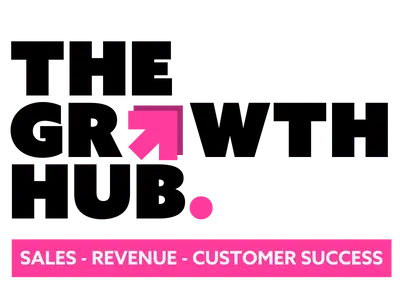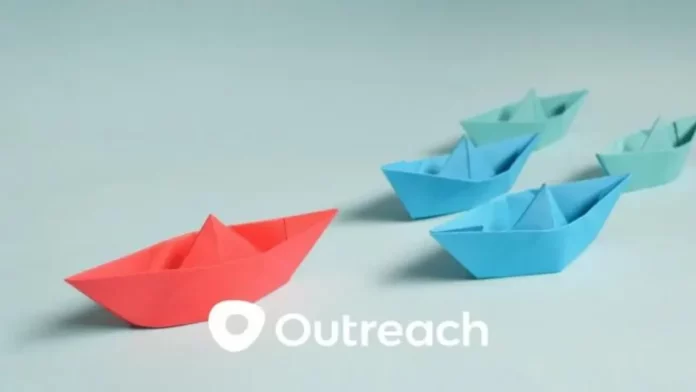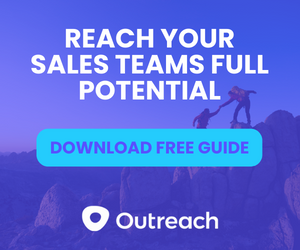Managing through organizational change — and making sure your teams are effectively implementing new ways of doing business — is tough. Today’s sales teams are under more pressure than ever to both create and close more pipelines. But for sellers to thrive in today’s environment, it’s essential for sales managers to empower their reps to take full advantage of their tech stack to help them succeed.
Adopting a new sales execution platform and navigating the organizational change that comes with it not only requires a mindset shift from you as a manager — it’s also something you have to rally your team around. There’s never been a better time to encourage your team to embrace new opportunities and be open to organizational change.
Gallup found that managers account for at least 70 percent of the variance in employee engagement during organizational change. This means that as a sales manager, you have the most direct influence on your team’s success in adapting to the change. You can maximize this influence by being an early adopter and organizational change champion, as well as making sure your team has the tools, resources, motivation, and opportunities for feedback that will make them successful during this period of organizational change.
Here are 8 tips I recommend for sales managers to lead organizational change and help their teams adopt Outreach during this transformative period of organizational change:
- Be the original Outreach champion
- Become an early adopter
- Communicate the importance of Outreach
- Collect feedback from your team
- Prioritize rewards and recognition
- Give your team the right information, tools, and training
- Diagnose and fix any issues
- Highlight other Outreach champions
8 ways you can help your team get the most out of Outreach
1. Be the original Outreach champion
The best way to lead your team to success with Outreach and drive organizational change is by example. When you can present a thorough and enthusiastic understanding of Outreach, you’ll also promote buy-in, adoption, and behaviour change on your team.
Being the first Outreach champion often looks like communicating the “why.” In other words, why is Outreach an important platform in your team’s sales tech stack? Why does it matter for your job? What does that mean for organizational change?
Often, a lack of clear vision is what leads to poor change management and adoption. When you can communicate your vision early and often as a champion, it’s much easier for others to come on board.
2. Become an early adopter
You can’t be a champion without using and knowing the platform yourself. Become an early adopter to understand how to track all rep activities and gauge how adoption is going for your team. You can leverage Outreach’s reporting capabilities such as Deal Overview, Deal Health Insights, and Engagement Timeline to better establish KPIs around use. For example, the Engagement Timeline gives you a visual timeline of all buyer and seller activities so you can track metrics such as meetings booked, emails sent, and calls made by each rep.
You’ll also be able to run more effective training and coaching sessions when you can teach best practices and troubleshoot issues from personal experience. Hearing from someone who has firsthand experience with the platform makes a big difference. When you lead by example, it also sets expectations around consistency and results for your team.
If you need more guidance on how to get the most out of Outreach as an early adopter, sign up for a live training or try an Outreach University training course.
3. Communicate the importance of Outreach and organizational change
Organizational change is a crucial aspect of implementing Outreach. Change can be uncomfortable, but if you can clearly communicate to your team what exactly will be changing and why—especially how Outreach will drive organizational change—you’ll eliminate ambiguity and properly prime your team’s expectations. For new reps, this should be part of their onboarding experience.
It’s also really important to clearly define expectations and metrics around Outreach and what’s in it for the rep. Being outcome-driven from the beginning and tying outcomes into daily operations can make a huge difference.
You should also be clear about which leaders within the organization are personally championing the tool. When reps can clearly identify who needs them to use the platform, why, and how their success will be defined, it’s much easier for them to accept organizational change.
4. Collect feedback from your team
It’s important to gather questions, feedback, success stories, and lessons learned from your team regarding organizational change. Collecting user stories can be really powerful here. For example, when someone has a win to share, ask that rep how they achieved their goal and what Outreach helped them to be effective.
Once you’ve gathered feedback, you can use it in a number of ways:
- Provide weekly tips and tricks to your team so that they can continue to learn and get the most out of the platform.
- Incorporate positive feedback into your daily, weekly, and monthly messaging.
- Communicate success stories and tips and tricks through newsletters, lunch and learns, team meetings, town halls, and 1:1s.
It’s important to create a clear process for two-way communication in order to capture this feedback. This might look like a Slack channel or an email inbox.
You may want to also start a regular Start, Stop, Continue discussion to learn more about any pain points and act on them before they become bigger problems.
5. Prioritize rewards and recognition
Tying performance to perks is always an effective way to increase adoption. Consider running a SPIF (sales performance incentive fund) that’s linked to the number of meetings booked through Outreach or deals closed by the end of the quarter. Sometimes a little friendly competition can go a long way.
Success stories can also provide some of the most powerful motivation to any reps who haven’t jumped on board with Outreach yet. Make sure you publicly celebrate anyone who’s knocking it out of the park via scoreboards, organizational newsletters, and company intranets. When others see how easy it is to succeed, they’ll want to take a crack at it too.
6. Give your team the right information, tools, and training
It’s nearly impossible to drive success without being explicit about what success looks like. Your team’s adoption of Outreach can only be as effective as the training and information they receive.
People learn in a number of different ways, so make sure you have many options available like live training sessions, support documents and other written resources, and anything else that might help people learn. Also, remember that training and education are ongoing. As there are enhancements, new releases, and new industry trends, it’s important for everyone to stay up to speed.
7. Diagnose and fix any issues
Regularly check in with your reps to see how they’re handling the change of using a new platform.
When problems arise, it’s important to diagnose them quickly and correctly so that you can fix them. Usually, a problem can be broken down into one of several categories:
- Awareness: in these cases, more engagement and communication may be needed.
- Alignment: you may need to better articulate the benefits of using the platform.
- Ability: more training or coaching may be needed.
- Management: are you aligned with the change? Discuss this with your manager and ask for guidance.
Once you’ve identified and categorized the issue, you can create accountability with an action plan. Consider holding 1:1s or group discussions to talk through how the problem can be solved with those who are accountable.
8. Highlight other Outreach champions
Driving adoption throughout a sales organization is a big job for one person to take on. Piloting Outreach with a few early adopters can establish other champions in the organization. When there are multiple people who use, understand, and drive results from Outreach, it’s harder for other reps to resist change and stick to the status quo.
Keep in mind that Outreach champions tend to come from Sales and RevOps. If anyone emerges as an early adopter and champion, use that to spread awareness and excitement by sharing their insights and success stories with others.
It starts with you
When you understand the benefits of Outreach and how to drive the best experience for your team, you can use change to drive success. The opportunities for Outreach to change the way your teams work are endless, but it’s up to you to make sure it happens.
When you can inspire your team to realize their full potential, change won’t feel hard; it will feel like an opportunity to break new ground, create more pipelines, and close more deals.
If you want to learn more about how to boost rep productivity, watch this on-demand discussion with senior sales leaders from Outreach, Cognism, and Showpad to learn:
- How a connected sales execution platform simplifies building the complete sales tech stack to increase sales capacity
- How more tools don’t equal more revenue – when sellers need to balance self-sourcing and closing deals
- Why visibility into buyer and seller interactions is critical for marketing to drive a more qualified pipeline – and sales to close more deals





